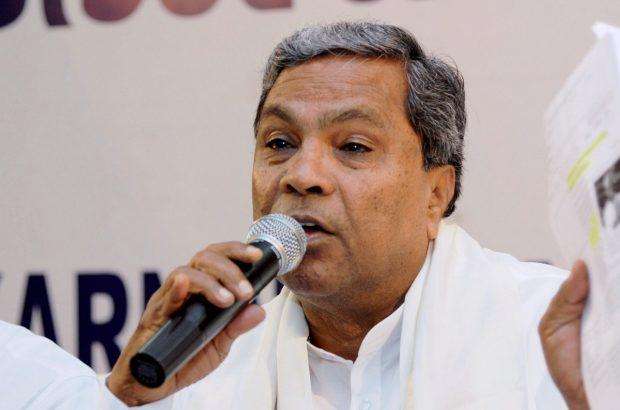Kalaburgi (Karnataka): The Karnataka Cabinet that met here on Tuesday adopted a resolution requesting the Central government to release Rs 5,000 crore for the development of the backward Kalyana Karnataka region.
The Cabinet, at its meeting chaired by Chief Minister Siddaramaiah, also decided to set up a separate secretariat for the region.
The Cabinet meeting coincided with the ‘Kalyana Karnataka Utsava’ celebrated every year to mark the liberation of the region from the Nizam’s rule, and also ten years of Article 371(J) of the Constitution under which the region got special status.
“Our government has walked the talk — that Rs 5,000 crore will be given for Kalyana Karnataka region every year. We have set aside Rs 5,000 crore for 2024-25; the Central government has not given even a single rupee in the last ten years since the amendment to constitution by adding Article 371(J),” Siddaramaiah said.
In a briefing on Cabinet decisions, he said a resolution has been adopted requesting the Centre to also give Rs 5,000 crore for development projects in the region.
Fulfilling a long standing demand, the Cabinet approved a separate secretariat for Kalyana Karnataka region, Siddaramaiah said.
Kalaburagi is considered as the capital of the ‘Kalyana Karnataka’ (earlier known as Hyderabad Karnataka).
The region comprises the districts of Bidar, Ballari, Vijayanagara, Kalaburagi, Koppal, Raichur and Yadgir.
Siddaramaiah said the Cabinet gave its approval for a total 56 proposals — Detailed Project Reports amounting Rs 12,692 crore — out of which 46 related to Kalyana Karnataka region (Rs 11,770 crore).
The Cabinet gave its nod to upgrade Bidar and Raichur Municipal Councils into Corporations.
Also approval was given for a drinking water project covering all villages in Bidar and Kalaburagi districts costing Rs 7,200 crore. “This will be sent to the Centre, the Central government will be requested to bear half the cost (Rs 3,600 crore) and the other half will be borne by the state,” the Chief Minister said.
The Cabinet also decided to fill 17,439 government posts that are vacant in the region in a phased manner.
He said all the budget proposals relating to Kalyana Karnataka region announced in the 2024-25 budget were accorded administrative sanction by the Cabinet.
In Kalyana Karnataka region, 45 new Primary Health Centres and 31 Community Health Centres will be started; nine hospitals will be upgraded as taluk hospitals and two will be upgraded as district hospitals, at a total cost of Rs 890 crore, Siddaramaiah said.
The Congress had swept the Lok Sabha polls held earlier this year in this region.
Deputy Chief Minister D K Shivakumar said “From ‘Anubhava Mantapa’ to Anjanadri hill (considered by many to be lord Hanuman’s birthplace)…all tourism spots and monuments-related proposals were brought before the Cabinet”.
“The Cabinet has given its approval for the protection and development of all these spots and monuments,” Shivakumar said.
Earlier on Tuesday, Siddaramaiah said the state government is planning to develop Kalaburagi into a smart city with an estimated investment of Rs 1,685 crore, which will improve the quality of life for its residents and attract investment in backward districts.
Under the Mahatma Gandhi Nagar Vikas Yojana 2.0, Rs 200 crore each is being provided for basic infrastructure development in Kalaburagi and Ballari municipal corporations, he said.
A scheme called “Kalyana Patha” has been developed to improve road connectivity and rural development in the Kalyana Karnataka region, he said.
Under this, the state government will build 1,150 km of roads in rural Assembly constituencies at a cost of Rs 1,000 crore.
To develop tourism in the famous Anjanadri hill and surrounding areas of Koppal district, Rs 100 crore will be provided, the Chief Minister said.
“In Ballari, we will organise unorganised jeans industries and develop a Jeans Apparel Park and Common Facility Centre to upgrade them to world-class standards,” Siddaramaiah said.
A committee led by Professor Govind Rao has been formed to study the economic and social changes in the region and suggest ways to reduce inequalities, he added.






